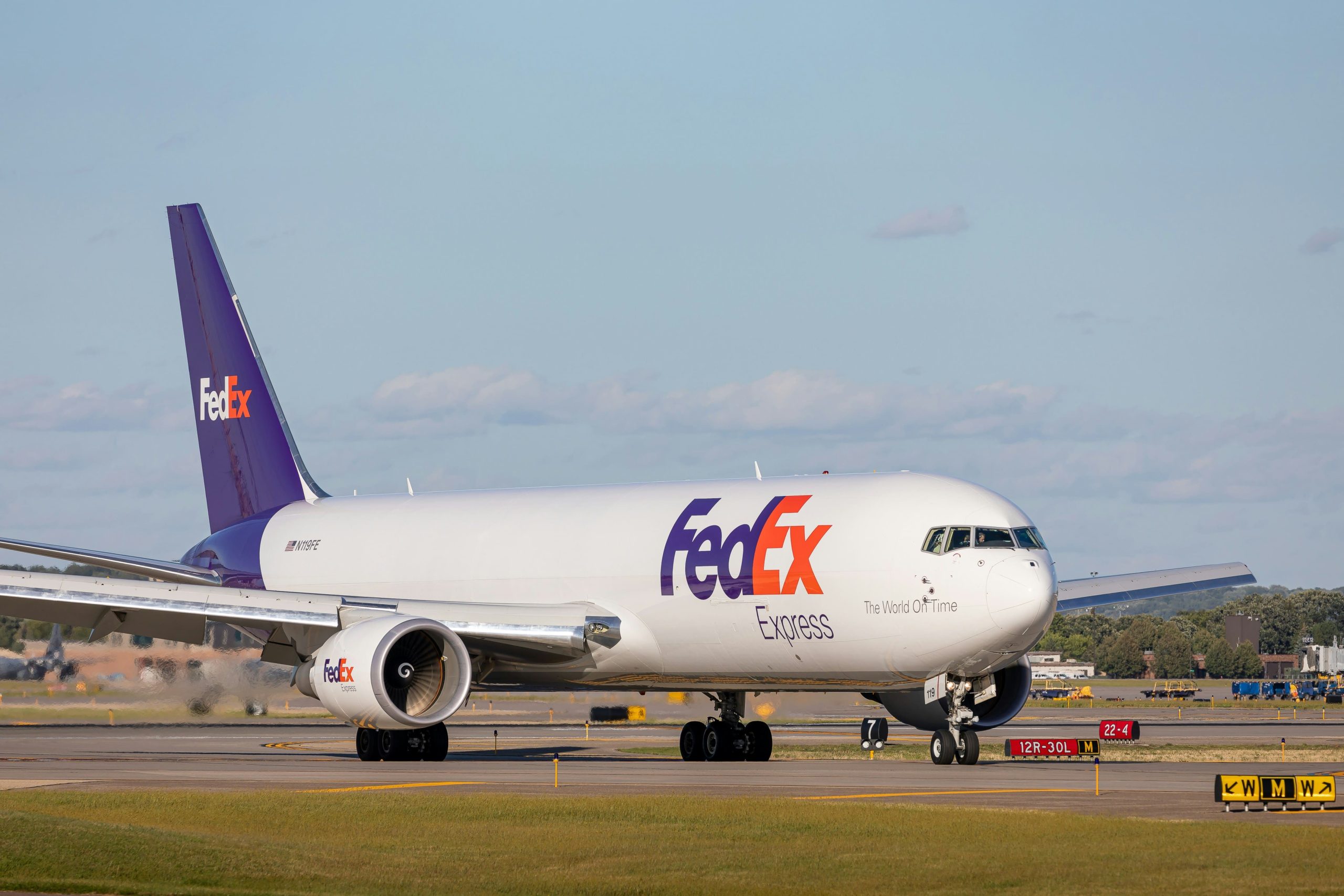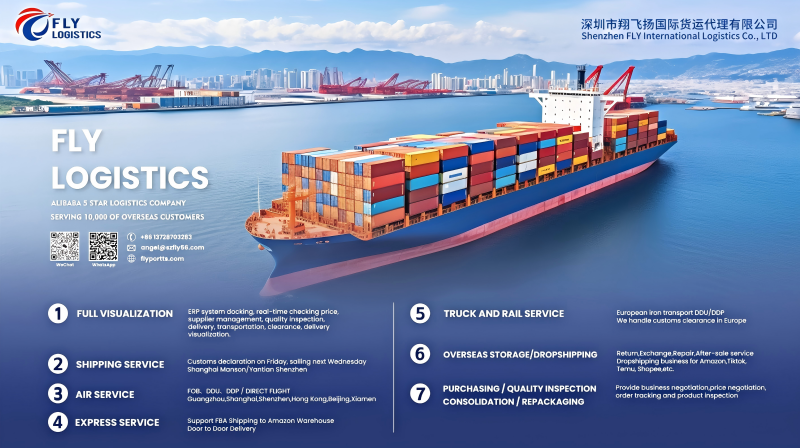Air cargo logistics is full of cycles, and there are specific peak seasons every year when demand surges, such as holiday shopping sprees, new product launches, or agricultural harvest transportation peaks. At these critical moments, freight volumes increase dramatically, and operational complexity and challenges escalate accordingly. However, these peak seasons are not only challenges but also excellent growth opportunities!
Imagine that you can accurately understand the rules of peak seasons and plan to turn logistics pressure into a driving force for business breakthroughs. Make scientific plans, optimize transportation routes, flexibly allocate transportation capacity, and coordinate supply chain resources, and your business will thrive in the peak season! In addition, having a reliable emergency strategy can not only calmly deal with sudden demands and uncontrollable factors but also help you stand out in fierce competition. Grasp the peak season, control the overall situation, make your logistics operations calm and efficient, and help your business continue to grow! This article highlights these periods and provides strategies to help logistics providers and businesses optimize their operations.
-
Chinese New Year (January–February)
The Chinese New Year, also known as the Spring Festival, is a significant event for global trade, particularly in China and other East Asian countries. It marks the beginning of a long holiday season, during which factories and businesses in China shut down or reduce operations.
Key Insights:
- Pre-Holiday Surge: In the weeks leading up to the holiday (mid-January to early February in 2025), exporters rush to fulfill orders before factories close. This leads to a sharp increase in air cargo logistic demand, particularly for consumer electronics, textiles, and machinery.
- Post-Holiday Restocking: After the holiday ends, there is a secondary surge as businesses restock inventory and fulfill backlogged orders.
How to Prepare:
- Capacity Planning: Book cargo space well in advance to secure availability and competitive rates.
- Prioritize Time-Sensitive Shipments: Focus on high-value and time-sensitive goods that require quick transportation.
- Collaborate with Partners: Strengthen coordination with freight forwarders and carriers to manage holiday-related disruptions.
-
Back-to-School Season (June–August)
The back-to-school season, primarily in North America and Europe, is a critical period for air cargo logistics. Retailers stock up on school supplies, electronics, and apparel to meet the demands of students and families.
Key Insights:
- High-Value Goods: Electronics such as laptops, tablets, and calculators often dominate shipments during this time.
- Apparel and Supplies: Clothing brands and stationery manufacturers see a surge in demand, driving additional air cargo logistic
How to Prepare:
- Optimize Routes: Use efficient air routes to minimize transit times and reduce costs.
- Leverage E-Commerce Growth: Partner with e-commerce platforms to handle the increasing volume of online orders.
- Flexible Scheduling: Offer flexible shipping schedules to accommodate the varying needs of different retailers.
-
Holiday Shopping Season (October–December)
The holiday shopping season, encompassing Black Friday, Cyber Monday, and Christmas, is perhaps the busiest time for air cargo logistics globally. Consumers worldwide purchase gifts, decorations, and other holiday-related goods, creating immense demand for timely deliveries.
Key Insights:
- Peak Demand Periods: The period from late October through mid-December sees a continuous surge in shipments.
- E-Commerce Dominance: Online platforms drive much of this demand, with express air services playing a critical role in ensuring fast delivery.
How to Prepare:
- Focus on Speed: Prioritize express air cargo logistic services for last-minute orders and high-value goods.
- Increase Staffing: Scale up your workforce to handle the additional workload efficiently.
- Strengthen IT Systems: Use advanced logistics software to track shipments and manage inventory in real time.

-
Agricultural Harvest and Export Seasons (March–May and September–November)
Agricultural products, such as fruits, vegetables, flowers, and seafood, have specific harvest periods that lead to peak demand for air cargo logistics services. These goods require rapid transportation to maintain freshness, making air cargo the preferred mode of transport.
Key Insights:
- Seasonal Exports: Regions like South America, Southeast Asia, and Africa export significant quantities of perishable goods during their harvest seasons.
- Temperature Control: Many shipments require specialized handling, such as temperature-controlled containers.
How to Prepare:
- Invest in Cold Chain Logistics: Ensure your facilities and carriers can handle perishable goods effectively.
- Collaborate with Agricultural Producers: Build strong relationships with exporters to anticipate shipment volumes.
- Monitor Weather Conditions: Be prepared for potential disruptions caused by weather events during harvest seasons.
-
Fashion Industry Launch Cycles (Spring/Summer and Autumn/Winter)
The fashion industry operates on seasonal cycles, with designers and brands launching new collections twice a year. These launch periods drive a significant uptick in air cargo logistic demand as retailers rush to stock their stores.
Key Insights:
- Luxury and High-Value Items: Air cargo logistics is often used for transporting luxury apparel and accessories to meet tight deadlines.
- Global Distribution: Fashion brands ship collections to retailers worldwide, emphasizing the need for speed and reliability.
How to Prepare:
- Coordinate with Fashion Brands: Develop partnerships with fashion companies to handle their logistics requirements.
- Offer Customized Solutions: Provide services tailored to the fashion industry, such as secure packaging and express delivery.
- Utilize Regional Hubs: Use strategically located hubs to expedite deliveries to key markets.
Key Strategies for Seizing Air Cargo Logistic Peak Seasons
- Advance Planning:
Forecast demand trends based on historical data and market insights to secure the necessary resources in advance.
- Strengthen Partnerships:
Work closely with airlines, freight forwarders, and other logistics providers to ensure seamless operations during peak periods.
- Leverage Technology:
Use digital tools and analytics to optimize routes, track shipments, and manage capacity efficiently.
- Focus on Customer Service:
Communicate proactively with clients about shipment timelines, potential delays, and alternative solutions.
- Diversify Offerings:
Expand your range of services to cater to different industries, from perishable goods to luxury items, enhancing your market reach.
Conclusion
Seizing the five air cargo logistics peak seasons in 2025 requires a proactive approach, careful planning, and effective execution. From the Chinese New Year rush to the global holiday shopping frenzy, each period presents unique opportunities and challenges. By preparing in advance and leveraging technology, businesses can navigate these peaks successfully, ensuring timely deliveries and satisfied customers. With air cargo logistics continuing to play a pivotal role in global trade, these peak seasons are critical milestones for logistics providers to maximize growth and profitability.
As your partner, Fly Logistics can provide you with truly integrated logistics solutions, including sea, intermodal (truck/rail), and air freight, as needed. Explore Fly Logistics logistics solutions





